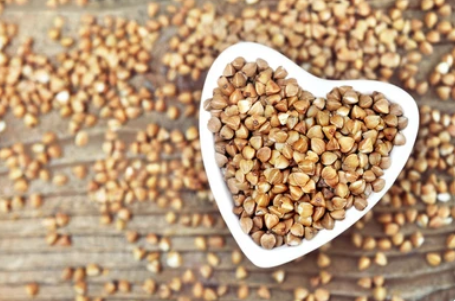Buckwheat
Despite its name, buckwheat is not a grain but is actually a
seed, although we tend to use the pyramid shaped kernels (groats) like a grain.

With plenty of other grains to choose from, why should you
bother with buckwheat? Because it is:· uten free. If you have coeliac disease or are
intolerant to gluten, you can eat buckwheat. Just be careful to check labels if
you are buying buckwheat products like soba noodles, as they may be combined
with wheat.
- Gluten free. If you have coeliac disease or are intolerant
to gluten, you can eat buckwheat. Just be careful to check labels if you are
buying buckwheat products like soba noodles, as they may be combined with
wheat.
- High in antioxidants. Buckwheat is rich in antioxidants,
more so than many other grains. These include rutin (which may lower your
cancer risk and improve your blood lipids) and quercetin (which may lower risk
of cancer and heart disease). It is also one of the richest food sources of
D-chiro inositol, a unique type of soluble carb that reduces blood sugar and so
may help manage diabetes.
- Rich in minerals. Compared to other grains, the minerals in
buckwheat are particularly well absorbed. That is because buckwheat is
relatively low in phytic acid, which can reduce the absorption of minerals.
Buckwheat contains manganese, copper, magnesium, iron and phosphorus, all
essential and sometimes lacking in our diet.
- High
in fibre. Buckwheat is rich in fibre, particularly insoluble fibre and resistant
starch. These provide fuel for your beneficial gut bacteria, helping them
increase in number.
To cook buckwheat groats for use in soup, salad, or as a
side dish, first rinse them well before simmering in boiling water for 10
minutes, until they are tender but still have a little bite. Drain well.